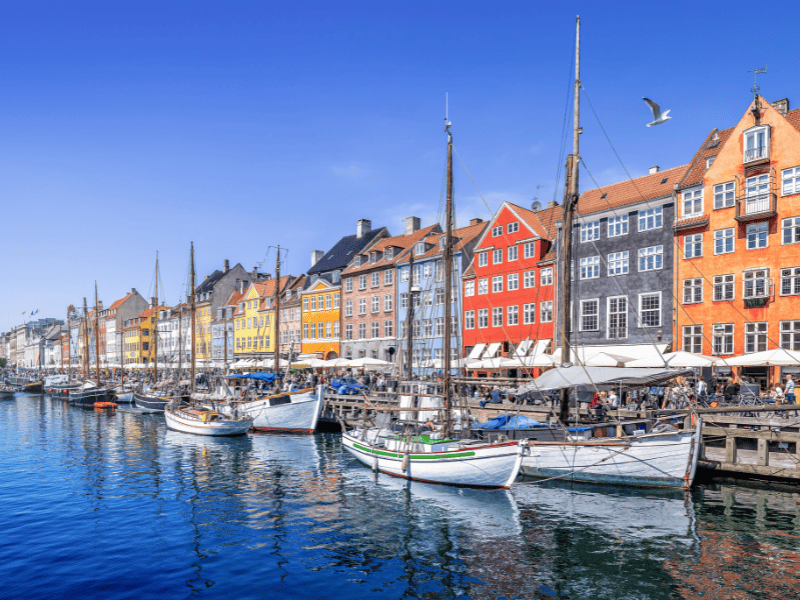A Comprehensive Guide to Denmark’s Rich Nordic Heritage
Welcome to Copenhagen, the enchanting capital of Denmark, beckons with its unique blend of history, culture, and modern charm. As a tourist visiting Copenhagen for the first time, navigating the city’s treasures can be overwhelming, so here’s a curated list of top places of interest that promise an unforgettable Copenhagen experience.
Visiting Copenhagen – What to See
Tivoli Gardens
Established in 1843, Copenhagen’s Tivoli Gardens is a timeless wonder that seamlessly blends historical charm with contemporary enchantment. As one of the world’s oldest amusement parks, Tivoli has stood the test of time, captivating visitors with its unique fusion of nostalgia and innovation.
A standout feature is the Rutschebanen wooden roller coaster, a vintage ride dating back to 1914 that adds a classic thrill to the park’s ambiance. Tivoli’s architectural splendor, adorned with twinkling lights, transports visitors into a fairy-tale realm, creating a magical atmosphere that evolves with each season.
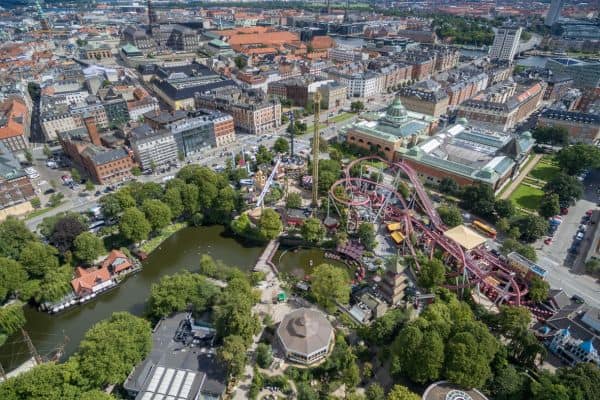
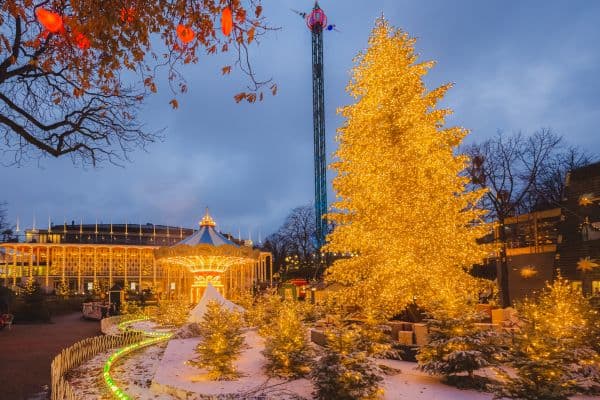
Tivoli’s influence extends beyond Copenhagen, as it inspired Walt Disney in the creation of Disneyland. The park’s immersive attractions, enchanting gardens, and lively entertainment served as a blueprint for the modern theme park experience, showcasing its global impact on the world of amusement.
Throughout the year, Tivoli transforms with seasonally themed events, featuring elaborate decorations during Halloween and a captivating winter wonderland at Christmas. These dynamic changes make Tivoli a year-round destination, offering diverse experiences that cater to the shifting moods of each season.
The park’s cultural richness is exemplified by the Nimb Hotel, an architectural gem within Tivoli that elevates the experience with refined dining options and luxurious accommodations. This upscale addition adds a touch of sophistication to the overall Tivoli experience.
Situated near Copenhagen’s central train station and City Hall, Tivoli Gardens is a central landmark, enhancing its accessibility for locals and tourists alike. Its strategic location in close proximity to other cultural landmarks solidifies its role as an integral part of Copenhagen’s cultural tapestry.
Nyhavn
Copenhagen’s Nyhavn Waterfront, tracing its roots back to the 17th century, is a captivating district that weaves maritime history into a tapestry of vibrant colors and cultural allure. The iconic harbor, once a bustling trade port, is now renowned for its picturesque canal lined with charming buildings painted in an array of hues.
A notable historical touch is that Nyhavn holds a connection to the famous Danish author Hans Christian Andersen, who frequented the area. The oldest house along the canal, standing since 1681, serves as a tangible link to the district’s rich heritage.
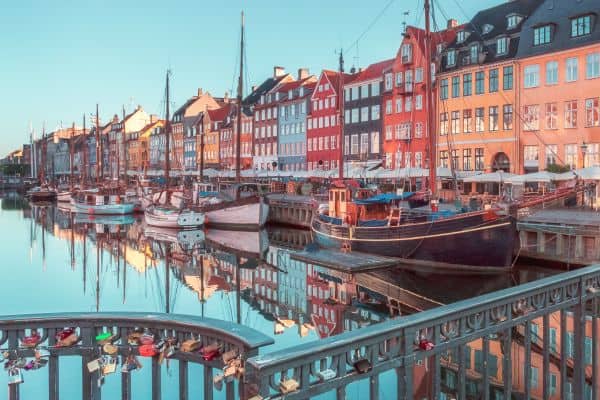
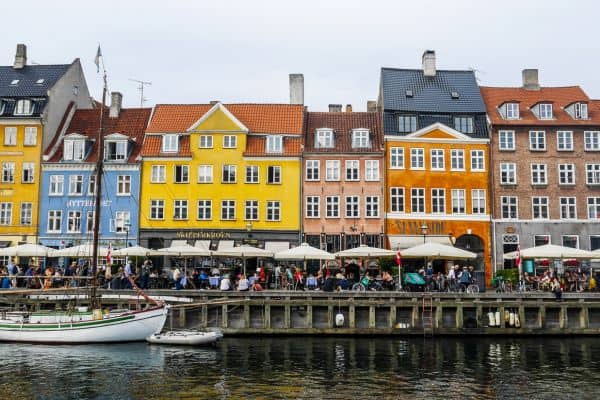
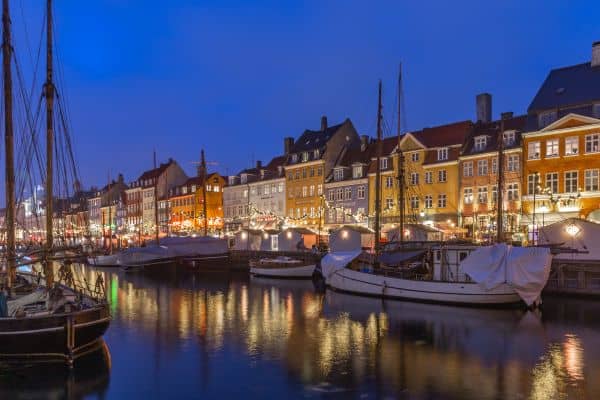
The vibrant atmosphere of Nyhavn extends beyond daylight hours, as the waterfront comes alive in the evening. Streetlights cast a warm glow, and waterfront establishments buzz with diners savoring Danish cuisine and seafood. The lively ambiance makes it an ideal spot for both locals and visitors to enjoy a convivial night by the canal.
Nyhavn’s maritime character is accentuated by historic ships, including beautifully restored wooden vessels. Boat trips departing from the harbor offer a unique perspective of Copenhagen’s landmarks, such as the Little Mermaid statue and the Copenhagen Opera House, from the water.
Situated near key landmarks like Amalienborg Palace and the Royal Playhouse, Nyhavn serves as a central starting point for exploring Copenhagen’s historical and cultural treasures. Its accessibility, coupled with its maritime charm and culinary delights, positions Nyhavn as a must-visit destination for those visiting Copenhagen.
The Little Mermaid (Den Lille Havfrue)
Perched on a rock along Copenhagen’s waterfront, The Little Mermaid, or Den Lille Havfrue, is an enduring symbol of fairy-tale magic and Danish folklore. Unveiled in 1913, this petite statue was inspired by Hans Christian Andersen’s beloved fairy tale, becoming one of Copenhagen’s most iconic and visited landmarks.
The charm of The Little Mermaid lies not only in its artistic simplicity but also in the emotional resonance it evokes. The statue, sculpted by Edvard Eriksen, depicts the mermaid gazing wistfully towards the sea, capturing the poignant moment when she longs for a world beyond her aquatic realm.
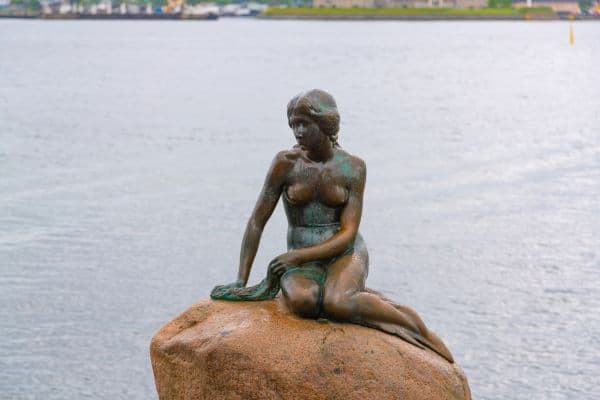
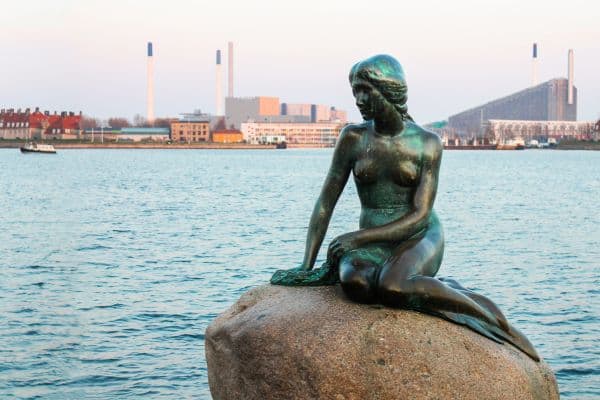
An interesting fact is that The Little Mermaid has faced various acts of vandalism and even temporary removals, yet it continues to stand resiliently as a testament to Copenhagen’s cultural legacy. The statue’s ability to evoke emotions and inspire contemplation makes it a powerful and enduring symbol.
The Little Mermaid’s location near the Langelinie promenade adds to its allure. Visitors can enjoy a scenic stroll along the waterfront while approaching the statue, with panoramic views of the harbor and the iconic Kastellet fortress in the backdrop.
While modest in size, The Little Mermaid holds significant cultural importance. It draws admirers from around the world, inviting them to connect with Andersen’s timeless narrative and appreciate the artistic representation of the mermaid’s enduring spirit.
The National Museum of Denmark
For a deep dive into Danish history, culture, and art, The National Museum of Denmark is a must for anybody visiting Copenhagen. Established in the 19th century, the museum’s architectural elegance hints at the diverse treasures housed within its walls.
A distinctive aspect is the museum’s focus on prehistoric Denmark, presenting well-preserved artifacts from the Bronze Age, Iron Age, and Viking era. This collection offers a tangible link to Denmark’s ancient roots, showcasing tools, weaponry, and intricate jewelry from early civilizations.
Moving through the museum, visitors encounter a rich array of Danish art spanning centuries. From the Golden Age to modern and contemporary works, the art galleries mirror Denmark’s cultural evolution. An interesting facet is the museum’s commitment to inclusivity, engaging visitors through interactive exhibits and educational programs that make Denmark’s cultural heritage accessible to all.
Beyond its physical space, the National Museum serves as a dynamic cultural hub, hosting temporary exhibitions that delve into specific facets of Danish history and global themes. This approach keeps the museum’s offerings fresh and relevant, enticing both locals and tourists with ever-evolving perspectives.
The museum’s central location positions it as a gateway to Copenhagen’s cultural exploration, conveniently nestled among other landmarks. Proximity to Christiansborg Palace and Tivoli Gardens encourages visitors to seamlessly integrate a visit into their broader exploration of Copenhagen’s vibrant offerings.
An intriguing fact about the National Museum is its ethnographic collections, showcasing artifacts from around the world. This diverse representation highlights Denmark’s global connections and contributions, adding an international dimension to the museum’s cultural narrative.
From Viking treasures to contemporary design, the museum offers a comprehensive overview, making it a rewarding experience for history enthusiasts and art lovers.
Rosenborg Castle
Rosenborg Castle is another must-see stop while visiting Copenhagen, as it is central to Danish royalty, encapsulating centuries of history within its Renaissance architecture. Built by King Christian IV in the early 17th century, the castle’s opulent façade, adorned with intricate details and copper spires, exudes regal splendor. Its strategic location in Kongens Have adds a touch of natural grandeur to the architectural marvel.
Beyond its external charm, Rosenborg Castle houses an array of regal artifacts and antique furniture, offering visitors a glimpse into the lavish chambers that once hosted Danish monarchs. The Knight’s Hall, with coronation thrones and the Order of the Elephant’s insignia, stands as a focal point, immersing visitors in Denmark’s royal history.
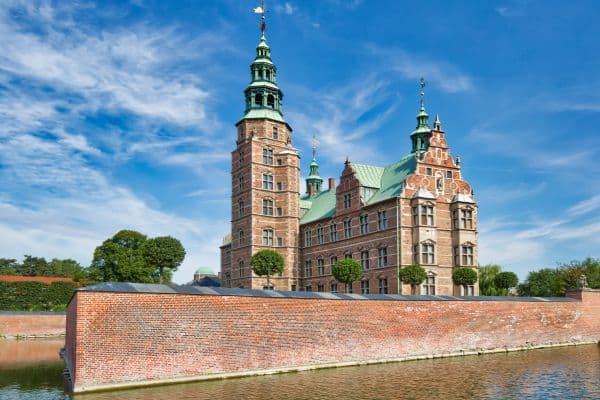
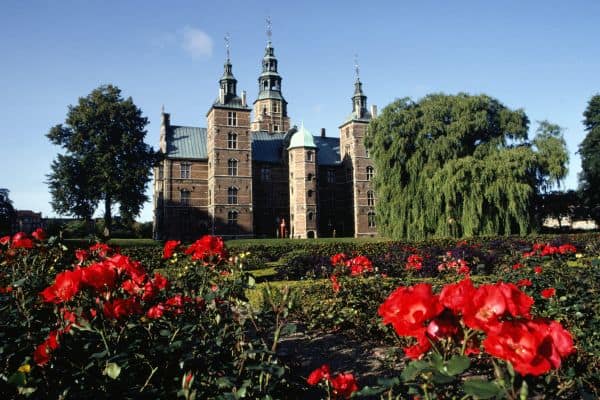
An intriguing facet of Rosenborg Castle is its basement, serving as the safeguard for the Danish Crown Jewels. The dazzling collection, including the Crown of Christian IV and the Danish Crown Regalia, provides a firsthand encounter with the symbols of Denmark’s monarchy.
Surrounded by the King’s Garden, Rosenborg Castle offers a serene oasis with manicured lawns and statues. This meticulously landscaped setting invites visitors to stroll through a picturesque retreat, creating a delightful contrast to the grandeur of the castle.
Rosenborg Castle transcends its historical significance by serving as a cultural hub. Exhibitions and events within the castle contribute to its dynamic character, ensuring that each visit unveils fresh insights into Denmark’s royal heritage. The castle’s central location in Copenhagen makes it easily accessible, forming an integral part of the city’s cultural tapestry.
Beyond architecture and history, Rosenborg Castle immerses visitors in the essence of Danish monarchy, providing a tangible connection to the country’s royal lineage. The castle’s role in preserving and showcasing this cultural heritage underscores its importance as a living monument.
The Round Tower (Rundetårn)
The Round Tower, a 17th-century marvel in Copenhagen, intricately weaves history, science, and community into its cylindrical form. Architect Hans Steenwinckel the Younger designed this unique structure, featuring a spiraling ramp instead of traditional stairs, setting it apart as a functional and visually captivating masterpiece.
Originally conceived as an observatory, library, and university church, the Round Tower’s observatory, perched atop the structure, offers unparalleled panoramic views of Copenhagen. Beyond its historical role, the tower was a gathering place for scholars, housing a significant library that showcased Denmark’s intellectual richness.
A fascinating fact is the Round Tower’s distinctive Helical Corridor, the spiraling ramp that ascends to the top. This architectural feature not only adds a sense of intrigue to the journey but also ensures accessibility for people of all ages and abilities.
Today, the Round Tower continues to evolve, serving as a cultural hub hosting art exhibitions, concerts, and community events. Its adaptability has transformed it into a central meeting point in Copenhagen, complemented by the adjacent Trinitatis Church, creating a cohesive cultural space in the heart of the city.
Visitors can experience more than just historical significance; they can engage with the tower’s dynamic present. The spiraling ascent, a unique architectural element, enhances the overall experience, inviting exploration and anticipation with every step.
The Round Tower’s role as an astronomical observatory is a nod to its scientific legacy. While no longer used for extensive astronomical observations, the tower retains its charm as a historical site that once contributed to Denmark’s scientific endeavors.
Christiansborg Palace
Christiansborg Palace a key venue you won’t want to miss while visiting Copenhagen, as it is a dynamic symbol of Denmark’s political history and architectural prowess. Housing the Danish Parliament, the Prime Minister’s Office, and the Supreme Court, this multifunctional masterpiece seamlessly blends centuries of tradition with modern design.
Dating back to the 12th century, Christiansborg Palace has a storied past, with the present structure completed in the early 20th century. The palace’s architecture is a fascinating fusion of historic elements and contemporary aesthetics, reflecting Denmark’s commitment to preserving its heritage while embracing the present.
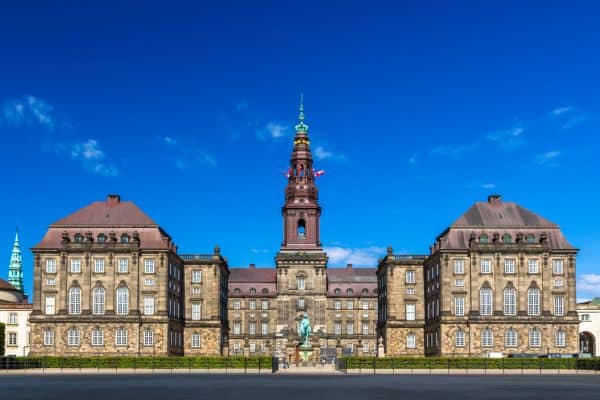
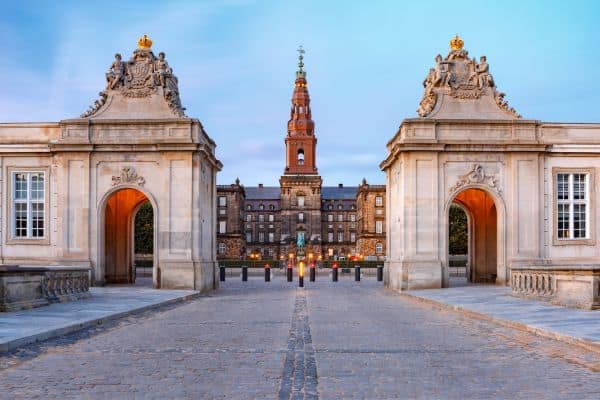
Visitors can explore the palace’s reception rooms, adorned with opulent decor, offering insight into the ceremonial aspects of Danish governance. The tower, accessible to the public, provides not only breathtaking panoramic views of Copenhagen but also reveals archaeological remains from the earlier Absalon’s Castle, adding a layer of historical depth.
An intriguing fact is that Christiansborg Palace stands on the same grounds as Absalon’s Castle, named after the city’s founder, Bishop Absalon. The basement showcases the archaeological remnants of these earlier structures, allowing visitors to witness the historical evolution of the site.
Beyond its historical significance, Christiansborg Palace plays a pivotal role in Denmark’s democratic governance. Hosting parliamentary sessions, political debates, and official ceremonies, the palace is a living institution that actively contributes to the nation’s ongoing narrative.
Situated on Slotsholmen Island, Christiansborg Palace enjoys a central location, making it a hub for both locals and tourists. Its proximity to cultural attractions like the Thorvaldsen Museum and the Danish Jewish Museum enhances its allure, creating an immersive experience within Copenhagen’s cultural tapestry.
Christiansborg Palace extends beyond being a historical site; it hosts cultural events, art exhibitions, and guided tours that delve into the intricate intersection of Danish history and contemporary governance. This multifaceted approach invites visitors to engage with the palace in diverse and enriching ways.
The National Gallery of Denmark (SMK)
Situated in a stately 19th-century building in Copenhagen, the National Gallery of Denmark, or SMK, is a captivating repository of artistic treasures. Boasting a classical exterior, the museum’s architectural charm serves as a prelude to the diverse array of masterpieces housed within.
Notable for its commitment to both European and Danish art, SMK’s collection spans centuries, encompassing the grandeur of the Renaissance and the avant-garde spirit of the 20th century. Visitors encounter works by celebrated artists like Rembrandt and Picasso, alongside hidden gems that contribute to the museum’s rich narrative.
A distinctive feature of SMK is its emphasis on Danish artistic identity. From the golden age of Danish painting to contemporary expressions, the museum offers a nuanced exploration of the nation’s cultural heritage. This focus provides visitors with a unique opportunity to trace the evolution of Danish art over time.
SMK’s dedication to accessibility is evident in its interactive installations and educational initiatives. The museum strives to demystify art, making it an inclusive experience for a diverse audience. Engaging programs, guided tours, and multimedia presentations enhance the visitor’s understanding and appreciation of the exhibits.
Beyond its walls, SMK actively engages with the community through cultural events, lectures, and collaborations. The museum’s impact extends into Copenhagen’s cultural landscape, contributing to the city’s vibrant artistic milieu.
Located centrally, SMK’s proximity to other cultural landmarks makes it a seamless addition to a cultural exploration of Copenhagen. Visitors can easily integrate a visit to the museum into their city-wide artistic journey.
An interesting fact about SMK is its rotating exhibitions, ensuring a dynamic and ever-changing experience for repeat visitors. The museum’s commitment to presenting fresh perspectives keeps the narrative of art alive and relevant.
The Copenhagen Opera House
Poised gracefully on the waterfront, the Copenhagen Opera House is a modern architectural marvel, a fusion of contemporary design and picturesque surroundings. Crafted by Henning Larsen, the building’s exterior showcases clean lines and minimalist elegance, creating a visually stunning presence along the harbor.
Inside, the opera house envelops visitors in an atmosphere of refined grandeur. The acoustically optimized auditorium serves as a canvas for a diverse repertoire, featuring both classic opera performances and mesmerizing ballet productions. This commitment to versatility positions the Copenhagen Opera House as a dynamic cultural hub, offering a spectrum of artistic experiences for patrons with varied tastes.
Beyond its aesthetic and programmatic allure, the opera house prioritizes accessibility. State-of-the-art facilities cater to diverse needs, ensuring that everyone can fully partake in the magic of live performances. This inclusive approach contributes to the opera house’s reputation as a welcoming venue, where the transformative power of the arts is accessible to all.
The waterfront location not only adds to the visual charm but also invites visitors to indulge in pre- or post-performance leisure. A leisurely stroll along the harbor enhances the overall experience, providing a moment of reflection amidst the maritime ambiance.
In essence, the Copenhagen Opera House transcends its role as a venue; it is a symbol of the city’s dedication to the arts. With its contemporary aesthetic, diverse programming, and inclusive ethos, the opera house beckons patrons into a world where music and dance unfold against the backdrop of Copenhagen’s waterfront allure.
The City Hall Square (Rådhuspladsen)
City Hall Square, or Rådhuspladsen, lies at the heart of Copenhagen, a lively nexus where history, commerce, and culture converge. Dominated by the striking Copenhagen City Hall, a masterpiece of National Romantic and Gothic Revival architecture, the square offers both architectural splendor and a central hub for various events.
City Hall itself, designed by Martin Nyrop and completed in 1905, is a visual feast with intricate detailing and a towering spire that contributes to Copenhagen’s iconic skyline. Visitors can explore its interior, including the grand ceremonial hall, and ascend the tower for panoramic views. Adjacent to the square is the H.C. Andersen Hotel, a charming accommodation option named after the renowned Danish author.
Throughout the year, City Hall Square hosts diverse events. In the holiday season, it transforms into a festive wonderland with a Christmas market and seasonal treats. In summer, it becomes a bustling venue for open-air concerts, cultural festivals, and outdoor dining, attracting both locals and tourists.
Beyond its role as a social and cultural space, City Hall Square serves as a gateway to Strøget, one of Europe’s longest pedestrian shopping streets. This bustling district features high-end boutiques, international brands, and local shops, creating a vibrant atmosphere for shopping and indulging in gourmet delights at numerous cafes.
Artistic elements enhance the square’s charm, with sculptures like the one honoring Bishop Absalon, the city’s founder, and the Lur Blowers sculpture celebrating Denmark’s musical heritage. A short walk leads to the historic Grand Theater (Det Ny Teater), adding a touch of cultural richness to the surroundings.
City Hall Square is not only a cultural hotspot but also a transportation hub. Well-connected to public transportation, including buses, trains, and the Copenhagen Metro, it provides convenient access for visitors exploring the city and its environs.
Amagertorv Square and Stork Fountain
Bustling Amagertorv square, dating back to the 16th century, is adorned with vibrant shops, charming cafés, and iconic landmarks, and will be among the first places you want to see while visiting Copenhagen.
Unveiled in 1894, this ornate fountain is a symbol of the city’s history and folklore. The statue depicts a stork with outspread wings atop a fountain adorned with intricate details. It is a popular meeting point and a picturesque element of the square’s charm.
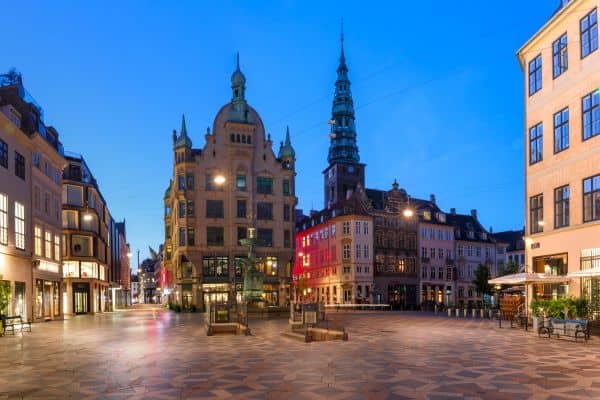
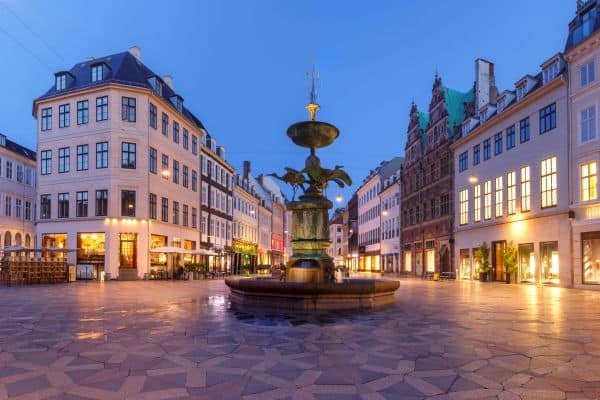
The square itself is a dynamic hub, often buzzing with street performers, musicians, and a diverse array of shops. Visitors can explore a mix of boutiques, international brands, and traditional Danish establishments, creating a shopping experience that reflects the eclectic spirit of Copenhagen.
An interesting fact is that Amagertorv has served various functions throughout its history, including as a marketplace and a site for public gatherings. Today, it remains a central point for both locals and tourists, offering a blend of historical ambiance and modern vibrancy.
Surrounded by notable landmarks such as the Strøget shopping street and the iconic Round Tower, Amagertorv Square provides a central location for those exploring Copenhagen’s cultural and architectural wonders. Its accessibility and rich history make it a versatile destination, catering to those seeking a leisurely stroll, a shopping spree, or a moment to admire the city’s cultural heritage.
The National Aquarium Denmark (Den Blå Planet)
Opened in 2013, the National Aquarium Denmark, known as Den Blå Planet, is a captivating marvel on the shores of Øresund. Renowned for its avant-garde design resembling a whirlpool, it stands as one of Northern Europe’s largest aquariums. The Ocean Tank, a highlight, houses an array of marine life, including sharks and rays, creating a mesmerizing underwater spectacle.
Beyond its visual appeal, Den Blå Planet is dedicated to education and conservation. The Blue Planet Foundation, affiliated with the aquarium, supports global marine research and conservation initiatives. Exhibits within the aquarium offer insights into the importance of preserving ocean ecosystems and biodiversity.
Den Blå Planet places a strong emphasis on sustainability. Employing eco-friendly practices, it utilizes energy-efficient technology and responsibly sources seafood for its resident animals. This commitment aligns with the aquarium’s broader mission to raise awareness about human impact on marine environments.
The aquarium’s strategic location provides stunning sea views, contributing to its allure. Proximity to Copenhagen Airport and the city center makes Den Blå Planet easily accessible for both locals and tourists. Its immersive experience goes beyond traditional displays, featuring interactive elements, touch pools, and educational programs for visitors of all ages.
The Designmuseum Denmark
Established in 1890, Designmuseum Denmark, nestled in Copenhagen’s Frederiksstaden district, is a design aficionado’s paradise and one of the world’s oldest design museums. Its architectural elegance mirrors the rich diversity housed within, spanning centuries of Danish and international design brilliance.
A standout feature is the Kaare Klint Room, dedicated to the influential Danish architect and designer. This room offers a glimpse into Klint’s pioneering contributions, adding a unique historical layer to the museum’s tapestry.
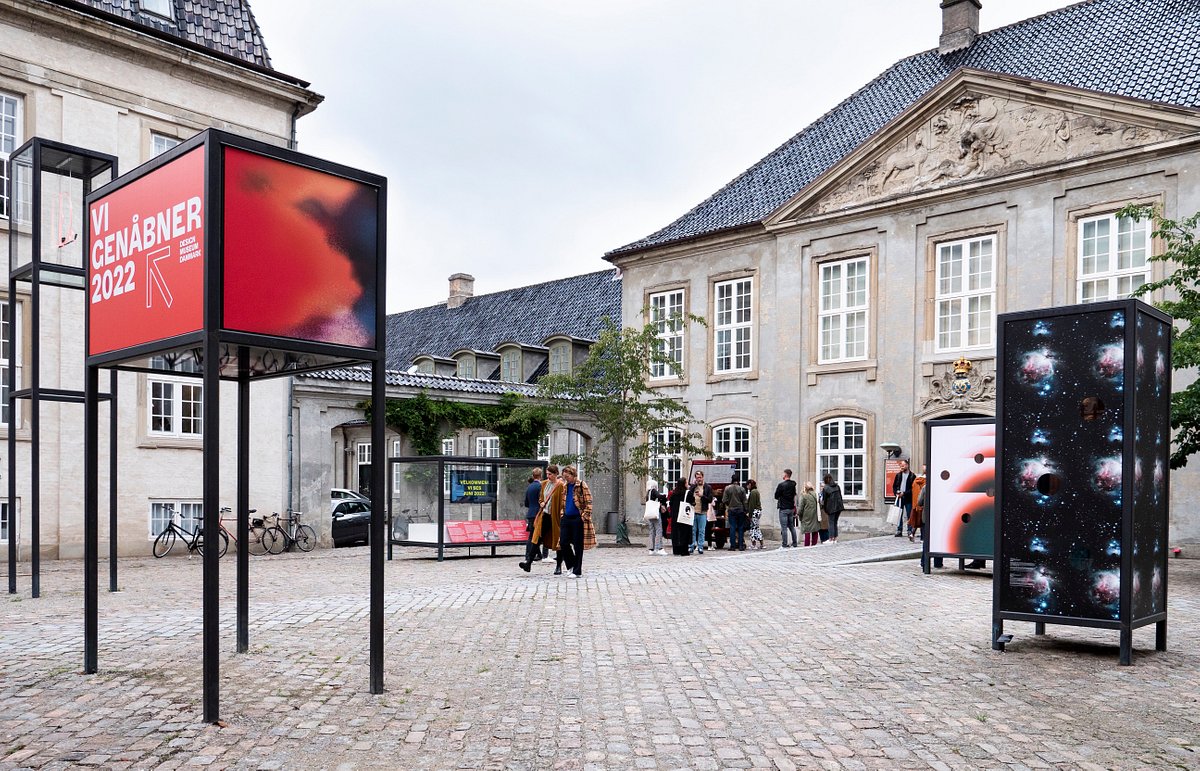
Designmuseum Denmark distinguishes itself by emphasizing craftsmanship and innovation. Exhibitions seamlessly blend traditional craftsmanship with contemporary design, creating a dynamic experience that spans historical artifacts and cutting-edge creations.
The museum’s commitment to sustainability in design adds a forward-thinking dimension. Exhibits often spotlight eco-friendly practices, positioning Designmuseum Denmark as a champion of responsible design, aligning aesthetics with environmental consciousness.
The museum’s influence extends beyond its physical space through educational programs, workshops, and collaborations with emerging designers. The Design Laboratory, an interactive space within the museum, empowers visitors to explore their creativity and engage with design processes hands-on.
Situated near Frederiksberg Gardens, Designmuseum Denmark offers a cultural retreat within the city. Its central location enhances accessibility for both locals and tourists, solidifying Copenhagen’s reputation as a design-centric destination.
The Workers Museum (Arbejdermuseet)
Founded in 1984, Copenhagen’s Workers Museum, Arbejdermuseet, offers a captivating exploration into the history of the working class during the 19th and 20th centuries. Housed in a former workers’ building, the museum authentically reconstructs living and working spaces, providing a genuine insight into the daily lives of Danish workers.
A unique aspect is the museum’s commitment to interactive storytelling. Utilizing multimedia displays and oral histories, the Workers Museum transforms visitors into active participants, fostering a deeper connection with the industrial past. This dynamic approach adds an engaging dimension to the exploration of the working-class experience.

The museum’s focus extends to labor movements and social change, highlighting key moments in Danish labor history. Exhibits delve into the pivotal role of unions and workers in shaping societal norms and advocating for improved working conditions. This emphasis on social history enriches the narrative, offering a comprehensive understanding of the impact of the working class on Denmark’s development.
Beyond static exhibits, the Workers Museum hosts cultural events, workshops, and collaborations with contemporary artists, ensuring its relevance and vibrancy. Situated in the Nørrebro district, the museum’s central location enhances accessibility, making it a cultural hub for locals and tourists alike.
The Glyptoteket
Another artistic haven of interest in Copenhagen, the Glyptoteket is home to a diverse collection of classical and modern art, including sculptures, paintings, and decorative arts.
Founded by Carl Jacobsen, the Glyptoteket showcases a captivating blend of sculptures, art, and serene spaces. Its architecture seamlessly combines classical and modern elements, offering an inviting ambiance. The museum’s name, derived from Greek words meaning “to carve” and “art,” reflects its primary focus on sculptures, with an extensive collection including masterpieces by Auguste Rodin.
Glyptoteket is not confined to sculptures; it houses a diverse art collection spanning various periods and styles. Particularly notable is its Egyptian section, immersing visitors in the allure of ancient Egypt with mummies, statues, and archaeological treasures. The museum also boasts a remarkable Winter Garden, providing a tranquil escape with Mediterranean and subtropical plants.
An interesting facet is Glyptoteket’s commitment to cultural enrichment. Beyond its permanent collections, the museum hosts temporary exhibitions, cultural events, and educational programs, ensuring a vibrant atmosphere that resonates with both locals and international visitors. This dynamic approach ensures each visit is a fresh encounter with artistic and cultural expressions.
Centrally located, Glyptoteket seamlessly integrates into Copenhagen’s cultural landscape, contributing to the city’s artistic hub. Its proximity to Tivoli Gardens and the National Museum of Denmark makes it an essential stop for those exploring Copenhagen’s cultural offerings.
The Copenhagen Zoo
Founded in 1859, the Copenhagen Zoo is a historic and progressive institution, standing as one of Europe’s oldest zoos. Its architecture prioritizes animal welfare, featuring innovative exhibits like the Elephant House designed by Norman Foster. Home to over 3,500 animals from 250 species, the zoo boasts spacious and naturalistic enclosures, aligning with its commitment to progressive zoo design.
A standout feature is the Arctic Ring, an award-winning exhibit offering an immersive experience into the Arctic environment. The zoo actively contributes to global conservation through breeding programs for endangered species, showcasing rare animals thriving in habitats that mirror their natural surroundings.
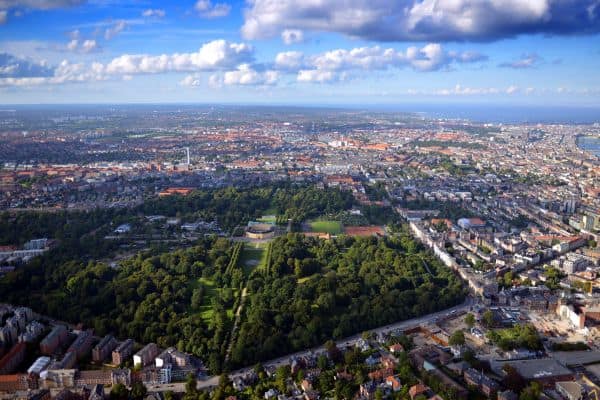
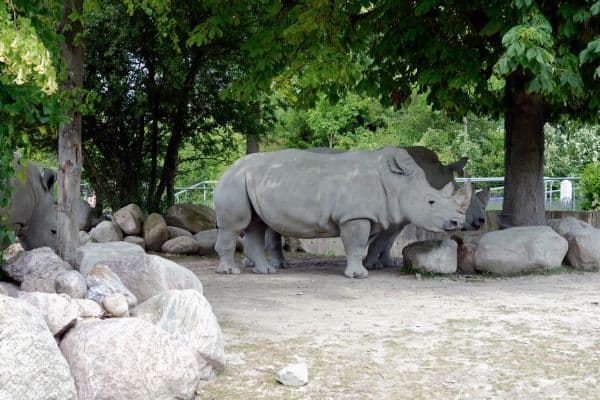
The Copenhagen Zoo pioneers educational initiatives, engaging visitors through interactive exhibits, guided tours, and programs for all ages. The Children’s Zoo provides hands-on experiences with farm animals, fostering a connection to the animal kingdom from an early age.
Church of Our Saviour (Vor Frelsers Kirke)
Built in the 17th century, Copenhagen’s Church of Our Saviour is a Baroque masterpiece, celebrated for its intricate design and iconic external staircase. Crafted by renowned architect Lambert van Haven, the church’s soaring spire is adorned with elaborate details and crowned by a unique helix staircase that offers breathtaking panoramic views of Copenhagen.
A fascinating tradition associated with the church is the annual “Spiral Staircase Run,” where participants sprint up the 400 steps of the external staircase in a spirited race. This lively event adds a dynamic and modern touch to the historical significance of the church.
The interior of the Church of Our Saviour is equally enchanting, featuring ornate decorations, frescoes, and a splendid Baroque organ. The church stands not only as a spiritual sanctuary but also as a cultural and historical landmark, situated in the vibrant Christianshavn district.
The central location of the church makes it easily accessible, and its proximity to notable attractions, including Christiania and the Copenhagen Opera House, enhances its appeal. Climbing the external staircase is not only a thrilling experience but also an opportunity to appreciate the architectural brilliance that has made the Church of Our Saviour an enduring symbol of Copenhagen’s skyline.
The Botanical Garden
Established in 1600, Copenhagen’s Botanical Garden stands as a historic haven of biodiversity, making it one of the world’s oldest botanical gardens. Initially founded by King Christian IV for medicinal plant cultivation, it has transformed into a dynamic space that seamlessly merges scientific research, conservation, and public engagement.
An iconic feature is the Palm House, a 19th-century glass structure housing tropical and subtropical plant species. This architectural gem offers visitors a glimpse into a lush microcosm, showcasing the diversity of flora. Complementing this, the Butterfly House adds an enchanting touch, allowing visitors to stroll among freely fluttering butterflies in a tropical setting.
The Botanical Garden’s commitment to education and research is evident in its thematic beds, diverse plant collections, and engaging exhibitions. The garden actively involves visitors through informative displays, workshops, and guided tours, making it a hub for both casual explorers and plant enthusiasts.
Situated near Rosenborg Castle, the garden provides a tranquil escape within the city. Its central location, close to cultural attractions like the National Gallery of Denmark, positions it as an accessible and integral part of Copenhagen’s cultural landscape.
The Black Diamond (Den Sorte Diamant)
The Black Diamond, an architectural gem on the Copenhagen waterfront, is the modern extension of the Royal Danish Library. Its black granite façade, designed by Schmidt Hammer Lassen, creates a bold contrast with the historic surroundings, earning it the name “Black Diamond.”
The library’s interior seamlessly blends modern design with functionality, featuring an expansive glass façade that bathes the spaces in natural light. The Queen’s Hall, a focal point within, hosts a variety of cultural events, concerts, and lectures, adding a dynamic dimension to the library’s offerings.
The building offers breathtaking views of the harbor from its waterfront terrace, providing a tranquil outdoor space for visitors. Beyond its aesthetic appeal, The Black Diamond is home to cultural treasures, housing the Danish National Art Library and the National Museum Photography Archives.
An interesting fact is that The Black Diamond actively engages the public through exhibitions, literary events, and educational programs. It serves as a vibrant hub for intellectual and cultural exploration, ensuring accessibility and relevance to a diverse audience.
Situated near Amalienborg Palace and the Marble Church, The Black Diamond holds a strategic position in Copenhagen’s cultural landscape. Its central location makes it a convenient stop for those seeking a blend of modern architectural innovation and a rich cultural experience.
Freetown Christiania
Step into the unconventional and autonomous neighborhood of Christiania, where alternative lifestyles, vibrant street art, and a unique community spirit create an intriguing cultural experience. Often called a Hippie Paradise, Freetown Christiania is a captivating and unique community that defies traditional norms. Established in 1971, this autonomous neighborhood emerged from an abandoned military barracks, becoming a symbol of counterculture and alternative living.
One of Christiania’s distinctive features is its commitment to communal living and self-governance. The community operates on a set of shared values, emphasizing sustainability, creativity, and freedom of expression. Visitors are greeted by vibrant street art, quirky homes, and a laid-back atmosphere that sets Christiania apart from the surrounding city.
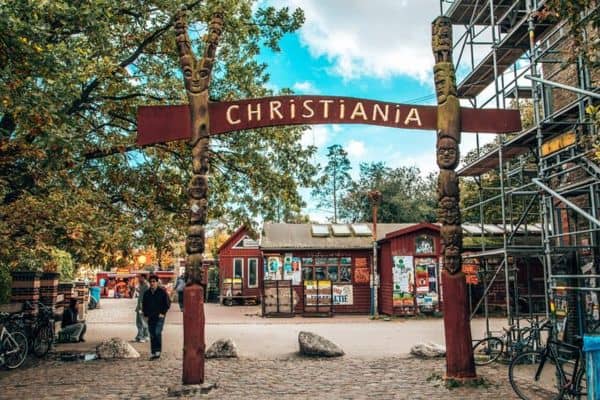
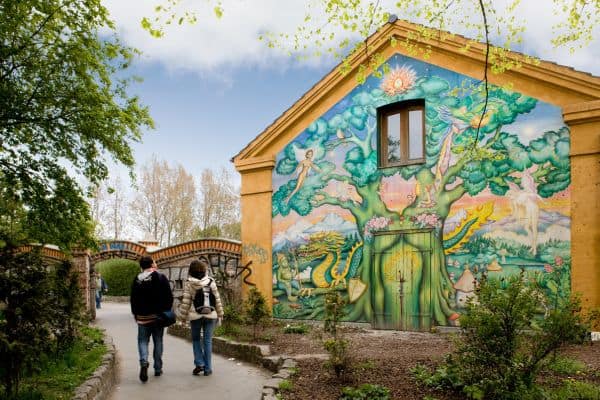
An interesting fact is that Christiania has its own set of rules and regulations, effectively functioning as a self-governing entity within Copenhagen. The community hosts cultural events, concerts, and art exhibitions, adding to its bohemian spirit and attracting visitors seeking an unconventional and open-minded experience.
The Pusher Street market is a focal point, known for its eclectic stalls offering handmade crafts, unique artwork, and alternative goods. This market reflects Christiania’s dedication to fostering creativity and supporting local artisans.
Despite its unconventional nature, Christiania plays a role in Copenhagen’s cultural fabric. It serves as a living experiment in alternative living, sustainable practices, and community engagement. The Green Light District, an area promoting eco-friendly initiatives, showcases Christiania’s commitment to environmental responsibility.
Situated near the iconic Christianshavn district, Christiania provides a stark contrast to Copenhagen’s more traditional landmarks. Its proximity to other attractions, such as the Church of Our Saviour and Christiania’s own serene lakes and park areas, adds to its allure as a destination for those seeking a distinctive cultural experience.
Copenhagen Street Food
Culminate your Copenhagen adventure with a culinary journey at Papirøen. This vibrant food market offers a diverse range of international cuisines, providing a delicious ending to your exploration of this dynamic city. Interesting fact: Papirøen, or Paper Island, got its name from the warehouses that used to store paper for the Danish Press.
Visiting Copenhagen
Recent Posts
Here are seven great hotels in Helsinki for train travelers. All seven hotels are located near the train station in Helsinki, making them all convenient travel options that will be hard to beat...
Train Trips from Venice: Exploring Italy by Rail Italy is a country of breathtaking landscapes, rich history, and vibrant culture, and there's no better way to explore its treasures than by train....
